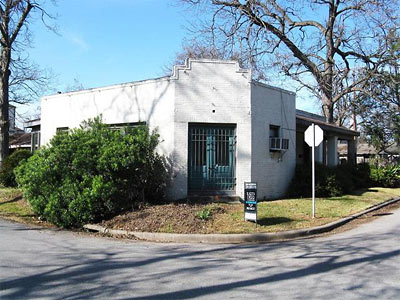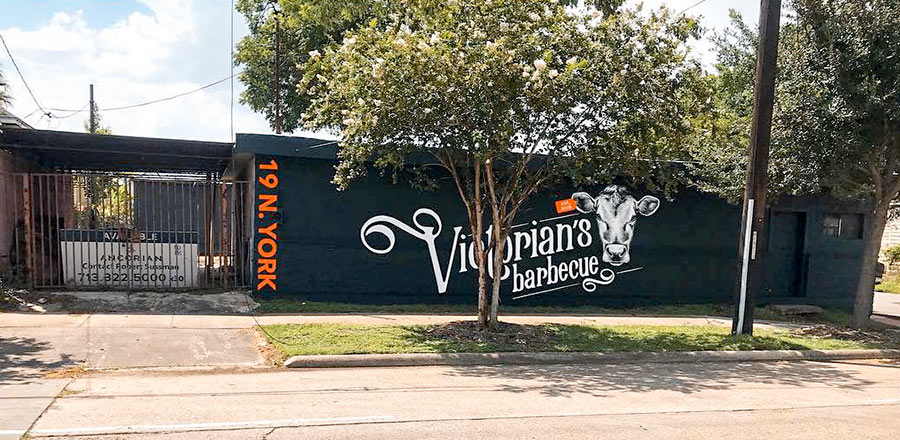

This Methadone Clinic graphic was posted today on the Medusa Properties website, and conveys in slightly different fashion the same news we received in our email from a Heights-area reader:
The oh-so-neighborly Mr. Jared Meadors did *not* receive the variance he requested for the Baylor St subdivision.
- East Sunset Heights Community Methadone Clinic – Coming Fall 2008! [Medusa Properties]
- Platting Activity – Section C (Items 88 – 90) (video) [HTV]
- A Sunset Heights Lot Size Turf War [Swamplot]
Photo of 2601 Baylor St. and Methadone Clinic Graphic: Medusa Properties





WHAT a BRAT!!
I keep hearing how this variance denial was somehow a “test” of the city’s minimum lot size ordinance. I don’t get it. The attempt to subdivide was not possible under the ordinance — that’s why he had to apply for a variance. Whether the variance had passed or not had to do with whether this qualified as a variance, not whether the minimum lot size ordinance was working.
Can someone please explain how this is a victory for the minimum lot size ordinance?
For example: here.
Wow. Franzone actually seems to get it! The variance–and the ruling–had NOTHING to do with testing the ordinance–it was about fairness. And sadly, fairness lost.
The reality of the case–and this factual and verifiable–is that when I bought the property the prevailing lot size application had NOT been turned in by the neighbors. If it had, I would not have bought the lot. And, though as part of the application process, the “neighbors” (and I use that term ironically) are supposed to notify all of the affected property owners (i.e. people who own the properties on the blocks listed on the application for prevailing lot size), I was NOT notified by the East Sunset Heights HOA. They simply used the HCAD records and mailed to those owners–though they knew that the property had been sold and that I was not the owner showing on HCAD. They were fully aware that the property had been sold. So, in sneaky “not in my backyard” fashion, they met the letter of the law (i.e. mailing out to the HCAD list) but not the spirit of the law (contacting the actual property owners).
But that’s kind of back story. The variance request was based soley on the provision in the prevailing lot size ordinance itself that if a builder / developer has invested a significant, unrecoverable amount of money in the project between the time he or she bought the property and the time the prevailing lot size application is approved–the city MUST grant them a variance. This is the “fairness” part of the process. So, what is vague and what was debated at the variance hearings was simply what does “significant” mean. And, ultimately, because of the opposition to the variance by the “neighbors”, the City ruled that I had not invested a significant or substantial amount of money that was unrecoverable.
That’s it. That’s what the entire hooplah was about. Not whether I can tear down the building or not–I can. Not whether I can build on the lot–I can. The question was, since when I bought the lots I could build up to three houses on them–which was WHY I bought the lots–and only a few months later I could only build ONE house on the lots–since I kind of fell into a gray area in the process–unknowingly–should I be granted a variance. Ironically, it was the PLANNING DEPARTMENT that suggested that I apply for the ordinance to begin with! Because they are the ones that dropped the ball to begin with. (Before I bought the lot I checked with them about prevailing lots size; they said “not a problem”. After I bought the lot I again checked with them; “not a problem”. A paid fees and requested a waste-water capacity letter from them; “you can build up to four units”. I paid for and submitted a site plan and paid more fees the city; “Oops. Uh. Sorry. You can’t build what we’ve told you three times that you CAN build. But you can apply for a variance” (and pay more fees).)
So that’s what happened. And not ONCE–not a single time before, during, or after the process–did ANYONE from the East Sunset Heights Blue Haired Lawn Nazis contact me to say, “Hey, let’s talk about this lot and what your plans are. Let’s work on this together to create a win/win situation. Let’s be good neighbors to each other.” It never happened. Because they don’t care about anything but “preserving” (preserving what I have no idea).
Conversely, I tried contact them SEVERAL times as soon as I found out that they were in opposition to my variance. I was honestly completely blind-sided by it. I mean, the block is a complete turd. Every house on it is a complete turd–even the new construction. I’ve restored several houses in the Heights and Montrose–that’s what I do–but there’s not a house in that whole area worth saving. They’re all old, small, energy hogs–and they’re not that cute.
Even after the variance hearings, when they all stood up and bad mouthed me (though they’ve never met me or spoken to me), and cried about how evil developers like me are ruining the old neighborhoods, yada yada yada–even after that I contacted them again, submitted alternative plans, asked for input, etc. and basically just got a “Fuck you” back from them. It’s crazy. But not surprising. Crazy people do crazy things.
So, anyway, though my “neighbors” have cost me $60,000 or more–not to mention the value they’ve stupidly lopped off their own properties (check HCAD; values have dropped all over the area since the ordinance was passed… seems like if builders can’t build on the lots they’re not that interested in the area… duh!”) I’m still OK. I mean, it’s just one of many projects I have in the works. So I’ll just let the building sit their and rot for a while and when I’m ready I’ll bulldoze it and build the biggest, ugliest monstrosity allowed by ordinance… instead of the nice, cute, shiny, happy Craftsman Bungalows I had applied to build there…
It’s all good. As a wise economist, John Maynard Keynes famously said: “In the long term, we’re all dead.” So who really cares?
Jared, Get a drink of water and go back to bed.
The people of the Heights have worked hard to roost out the drug houses and other criminal elements that plagued this neighborhood for a decade or two. Now that it is considered a nice and safe place to live, and because of our hard work and belief in our neighborhoods, there are some predatory developers that want to come in, build quickly and make a quick buck. It is because of our hard work in keeping up our properties and working with the existing homeowners who were already here, and vigilance that this area is now an attractive area to build. There are many beautiful homes, bungalow style and contemporary, that have been built in the area by developers for responsible growth that help to increase the value (property and living value) of our neighborhoods. What the predatory developers leave behind falls apart fairly rapidly, and the neighborhood quickly deteriorates back to blight and overgrowth. Where are these developers when that happens? Nowhere to be found. Money pocketed and onto the next quick buck.